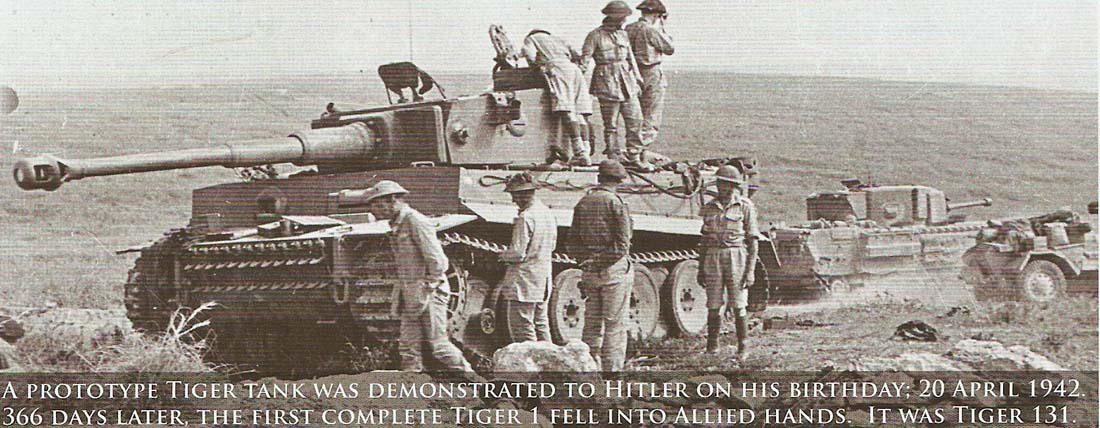How 48 Royal Tank Regiment Captured Tiger 131

https://www.youtube.com/watch?v=dXP0QhbBDC8 Tiger 131 today
|
(Some information related here has been removed as being incorrect). See Tank Museum link for the complete update.
British tank crews first encountered Tigers in January 1943. German crews had been thorough in carrying out their orders to completely destroy abandoned Tigers in order to prevent them falling into enemy hands. As a result little was known about this formidable new opponent, so the capture of a complete Tiger was a prize of enormous importance which would yield valuable information. This makes the capture of Tiger 131 as significant as it was enigmatic. The fate of the crew remains a mystery but the fact that the tank was abandoned seems to have been considered dishonourable. The unit's war diary simply states; "Crew members of Tiger 131 panic and abandon the tank after two harmless hits from a Churchill." The evidence shows that the tank was subject to several direct hits which were far from harmless. The most important strike, which is clearly visible today, saw a 6-pounder round scrape the underside of the Tiger's 88mm gun, before hitting the gun mantlet and lodging itself in the turret ring. This jammed the turret and effectively prevented the Tiger from fighting. It also split the weld on the top plate and, according to a contemporary report, shattered the radio. It was surmised that this shot could have "incapacitated the driver and front gunner'
Evidence of a second 8pdr strike can also be seen on the right hand turret lifting stud, but a third 6 pdr hit the open loader's hatch, smashing it and deflecting the round to hit the hatch rim, again potentially injuring crew members inside. Whatever happened, the evidence shows that Tiger 131 was literally fought to a standstill by 48 RTRís Churchill tanks. The damage caused by their 8pdrís indicates an incredibly high standard of gunnery as they were almost certainly firing on the move. The fact the tank was captured at all proves that, despite its clear but often overstated strengths, the Tiger was not invincible. Behind the myth and hyperbole with which it is often associated, Tiger 131 tells an important story about the human element in tank warfare; the role of the crew. We may speculate that the inexperience or poor morale of its crew led to the surrender of a tank famed for its strength; but what of the men who had to face the fearsome Tiger in machines they considered inferior? As published in the Tank Times Feb 2012 by Tank Museum Bovington Dorset. Tiger 131 has been fully restored and is currently on display and being driven in displays at the Tank Museum Bovington Camp Wareham Dorset. Medjez-al-bab: Historical Information. Mejez-al-bab is SW of Tunis, on route P5. In May 1943, the war in North Africa came to
an end in Tunisia with the defeat of the Axis powers by a combined Allied force. Medjez-al-bab is beautifully tended: http://www.cwgc.org/find-a-cemetery/cemetery/47314/MEDJEZ-EL-BAB%20WAR%20CEMETERY
http://www.youtube.com/watch?v=-Sfvkcr_5jk - photos from 1900 - 1950 A book, Churchill Infantry Tank 1941-1951 records this incident but fails to mention the capture at all, instead glossing over the battle in a short paragraph. 2017 update: http://tankmuseum.org/year-news/bovnews63935 thanks to Dale Oscroft.
|